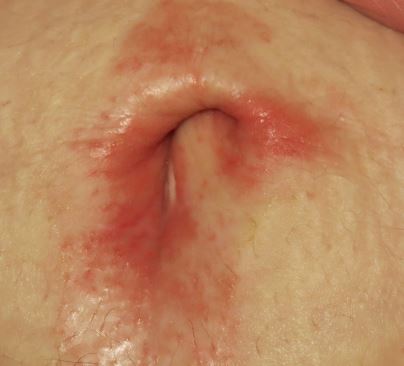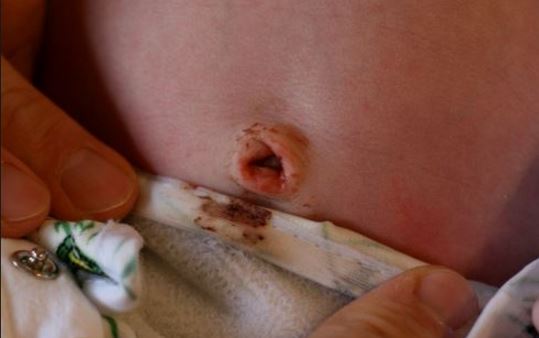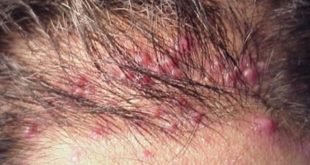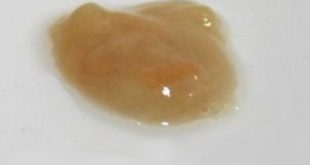What causes an itchy belly button? What does it mean? Some people believe in superstition, that an itchy navel is a sign of pregnancy. Infections such as yeast and bacterial infections, or allergic reactions can cause red itchy skin around the belly button. Here are causes and treatments.
Contents
- What does an itchy belly button mean?
- Itching around belly button?
-
Rash around belly button
- Infected belly button
- Poor Hygiene
- Allergic Reactions
- Itchy rash around belly button
- Infected navel piercing
- During pregnancy – early, late; sign of pregnancy
- Candida yeast infection in belly button
- Itchy navel after delivery
- Navel itches after surgery or laparoscopy
- Discharge from belly button
- Crusts or scabs on belly button
- Itches after cleaning
- Itchy leaking belly button/oozing/discharge
- Itchy belly button due to Hernia
- Red itchy belly button
- Itchy belly button superstition and myths
- Relief and treatment for belly button itch
Belly buttons that appears to be crusted, or even itchy can be an indication that they are infected. Common signs that point to a belly button being infected or experiencing an allergic reaction to a piercing or any other cause are:

- Red, itchy belly button skin
- Foul smells emanating from the itchy belly button
- Swelling of the navel
- Yellow, or even the dark-colored discharge
- Persistent pain, especially from around the belly button
- Blistering that is around the button
People rarely develop the stone like masses on the inside parts of the belly button. Also called omphaliths, these particular growths are able to fill the entire navel and thus cause an infection, inflammation, as well as an ulcerated skin.
What causes itching around the belly button? In most cases, an infection, a rash around the belly button and reactions to belly button rings can cause irritation and therefore itching. Here are the causes in detail.
More than 3000 species of the bacteria are found around the belly button. In the perceived healthy people, these bacteria can’t lead to any infections. A few of the risk factors and other choices, could lead to an increased risk of such an infection if any.
Infections that are found in the belly button, whether they are caused by the bacteria or are brought about by the overgrowth of the yeast are some of the very common problems.
It’s very easy to observe that something has gone very wrong. Discharge as well as an odd smell are normally an indication of an infectious process. The shape of the itchy belly button contributes to an increased risk of the infections, more especially if the body hygiene has been much compromised.

The causes of having a rash around the belly button are several and the below are some of the causes for the same:
Several bacterial strains as well as the fungi can lead to infections to the areas around the belly button. This can lead to inflammation, pain and also the discharge that emanates from the infection. Some of the bacterial infections can lead to nausea and also vomiting. The bacteria that is commonly involved is Staphylococcus aureus. The fungus that is most commonly leading to the rash is the Candida.
- For the bacterial infections, antibiotic topical drugs might be prescribed by the doctor.
- Fungal infections are normally treated using anti-fungal creams.
Poor Hygiene
The belly button is normally part of the body that is neglected in the personal hygiene regime. The belly button is left mostly moist, which may cause infections to the navel when combined it is with a build-up of dirt. The belly button is the best breeding ground for the several bacteria and fungi. An infected itchy belly button piercing can bleed at first then release pus.
Allergic Reactions
Some of the individuals are much sensitive to some of the allergens such as the nickel, new laundry detergent or skin cream. Exposure to these triggers may cause an allergic rash around belly button.
- The best way to prevent this type of rash is to recognize and avoid the trigger. Initially, you may have to consult a doctor to get the rash under control.
The belly button which is also called navel is the remnant of the umbilical cord. It is the central scar that normally forms at the bottom part of the umbilical cord immediately it falls off. At times, the navel can be very much itchy and also discomforting.
There are several things that might lead to itchy belly button including the yeast infection, hives from piercing, lotions as well as the soaps, or even stretching of the skin in pregnancy. Another possible reason for the itchy rash around the belly button may be an infection by the bacteria. Some individuals who have umbilical hernia are able to experience itching. Treatment is purely based on the cause of the itchy rash around the navel.

The indications that is exhibited by an infected navel piercing generally do not go much unnoticed. Infections are caused because of the growth of the bacteria as well as the fungi that accumulates in the skin spot that is around the infection.
If inappropriate steps are applied for piercing, or even if the hands of the piercer were unhygienic, or if any kind of the pollutant comes in contact with the wound, like polluted water, it can cause severe infections to be around the pierced area.
Pierced areas, more especially sensitive areas such as the navel, might get infected months and even the years after they were pierced, though the infections most often happen very shortly after piercing, as that is when the portal door is very open. Local skin reactions can also be brought about by an allergy to the jewelry. Jewelry often has brass plating, which can lead to allergic reactions or infection. It is much recommended that you use only surgical-grade stainless steel or solid 14-karat yellow gold, niobium or titanium.
During pregnancy – early, late; sign of pregnancy
When skin expands (and the skin on your abdomen is expanding big-time) it becomes increasingly moisture-deprived — and dry skin tends to feel itchy and uncomfortable thus causing an itchy belly button.
Yeast infection in the belly button might affect the people of any age. Newborns are able to develop infection by an exposure to the mother’s vaginal yeast infection during child birth.
Conditions that normally affect the children as well as adolescents, including athletes foot, are able to spread to the navel. Diabetes and also excess abdominal fat are able to increase risk of the belly button yeast infections amongst the adults. See the doctor for a very accurate diagnosis if you have the symptoms.
Itchy belly button during the period of pregnancy as well as postpartum is a very common complaint. Sometimes the itching that develops during pregnancy is brought about by the pupps Rash and having such a rash postpartum might occur after the birth of the baby.
It may be a very big inconvenience when you are dealing with a newborn and also lack of sleep. There are several remedies that are able to be used to assist.
The rash is very small bumps that normally erupt at a point that is too near the stretch marks when the pregnancy is in the third trimester. Some of the cases can appear earlier and also cover more than just the abdomen. In the normal circumstances, the rash disappears just after the period of delivery.
A few of the cases can last for a period of as long as three weeks after the baby is born.
C-section, gallbladder surgery or hysterectomy are some of the surgeries that are said to cause an itchy belly button. Hysterectomy is defined as the surgical removal of all or even part of the uterus. In a total hysterectomy, the uterus as well as the cervix are extracted. In some of the cases, the fallopian tubes as well as the ovaries are extracted together with the uterus.
In a subtotal hysterectomy however, only the uterus is extracted. In the radical hysterectomy, the uterus, ovaries, lymph nodes, and also the lymph channels are extracted. The type of the process that is performed depends entirely on the reason for the procedure to be done. In all of the cases, menstruation permanently ceases and a woman loses the ability to have more children.
The surgeon makes a 4–6 incision either horizontally across the pubic line from the hip bone to hip bone or even vertically from the navel to the pubic bone. A patient is able to have an itchy belly button during healing process.

There are several different reasons why an individual is able to have belly button discharge.
- Fungus
There are several types of fungi that are able to grow in the belly button part of the body, the most common one is the Candida. It likes the warm, damper darkness of the umbilicus cavity. Symptoms of the fungal infection of the navel and surrounding area can start to appear red or even discolored. It can also lead to an itchy belly button.
- Bacteria
A bacterial infection may normally accompany the fungal infection, although it can happen on its own. A usual kind of bacterial infection is scabbing over and the discharge that can be odorous and also yellow in appearance. There are several different possible causes of the itchy belly button infections that are able to lead to belly button discharge. Poor hygiene is normally amongst the reasons.
It is much common to observe that there small number of scabs and crusts that are around the incision after the stomach surgery and there is nothing to worry about.
If you are now allowed to shower, gentle washing using soap and also water as well as patting dry is all that is required. Don’t try to pick at them as they will separate on their own, or let the plastic surgeon deal with the scabs at a visit.
Itches after cleaning
Itchiness of the navel might be from the rashes of the skin that is around it, or from an infection that is within the navel. Most of the different rashes may form at the skin area that is around the umbilicus, but the likely rashes would be the contact dermatitis.
But, most of the skin rashes are able to affect the skin area, and if you have seen any of the skin changes (redness, swelling), then you should make an appointment to the doctor or even a dermatologist. Another possibility that can be found out is an infection of the belly button tract.
Sometimes, the foreign objects like the lint from the clothing or the body hair might enter the naval canal and lead to an inflammatory reaction. Infections of the belly button are normally accompanied not only by the itching, but a foul odor coming out of the belly button.
Any discharge that is emanating from the itchy belly button can be because of an infection. The most common causes of the infection in the navel are because of the piercings, yeast infections and also obesity.
If you are having several symptoms like the redness in the affected skin area, painful swelling, as well as curd-like discharge that leads to a smelly belly button, then you should find out what is causing the condition and the remedies for it.
- Bacterial Infections – Unclean belly buttons might be very much susceptive to the bacterial infections. A smelly belly button that is excreting the pus-like substance is, most often, associated with the bacterial infection.
Sweat, soap as well as other substances that are deposited in the navel cavity is able to assist aid bacterial growth. Bacterial discharge can be brown in colour and can lead to pain and swelling.
- Fungal Infections – The most common indication of the fungal infection in the navel is discharge as well as pain. The most common cause of pain and also discharge in the navel is due to the candida.
Candida albicans normally thrives in the warm, moist areas like the urinary tract, mouth and the belly button. An overgrowth of the fungus leads to a red, swollen belly button and also discharge. Scratching of the infected area may lead to bleeding and further aggravation.
In the grown-ups, abdominal surgery as well as multiple pregnancy may lead to hernias. When it happens, the affected skin area can have a bulge that is accompanied by an itchy feeling around the navel
Any kind of bleeding or even discharge that is emanating from within the belly button is almost a sign of an infection. It is likely to be from a fungal infection. The navel is able to be a dark moist, which is the ideal breeding ground for the fungi.
The likely agent for a fungal infection of the belly button causing an unpleasant discharge from the navel is the candida. Yeast infections is able to be the cause. Bacteria, like other microbial, like the dark moist places, as well as a bacterial infection might also be the cause of a navel discharge.
A fungal infection that is around the belly button or even in it can be red and also itchy which is similar to athletes’ foot. If you try to scratch the infection, then you can create open wounds, which can as well be the source of any other form of bleeding. The open sores of the itchy belly button that is brought about by scratching also get the opportunity for another bacterial infection, which might account for the yellowish and much smelly discharge
Itching is sometimes said to be a manifestation of the body of an individual which is much related to some other beliefs, omens as well as fortunes.
Some people say that itchy belly button can mean that you will be able to make amends after a serious argument.
- Warm Salt Water
A itchy belly button infection may be treated by use of warm salt water. The heat that comes from the warm water can assist to increase the blood flow to the infected skin area, while the salt can assist to absorb the moisture that is inside the belly button to assist in healing. Also, it can act as a disinfectant.
- Add a teaspoon of salt to a cup of warm water and then mix it until the salt completely dissolves.
- Dip a small cotton ball in the solution and apply it to clean the infected skin area, then pat it dry.
- To combat the infection, also apply further an over-the-counter, antibacterial cream that is water-based.
- Repeat the process at least once or twice a day until the infection has completely disappeared.
You can also obtain a ready-made saline solution from the most drug stores.
- Keep the Affected Area Clean
To promote healing as well as prevent any further growth of the bacteria that is found in itchy belly button, it is vital that you keep the affected skin area clean and very dry.
To clean the skin spot, you might apply an antibacterial soap while taking a shower or even bath. After the bath, dry the affected skin area thoroughly and dab some of the water-based antibacterial cream, repeat the process 3 times daily until the infection clears up.
It is further recommended that you apply a water-based ointment as the moisture that emanates from other types of the ointments is able to block the skin pores and also obstruct in skin breathing.
- Warm Compress
If the infection hurts too much, then you can try to make use of a warm compress so as to relieve the discomfort. The heat that emanates from the warm compress is much effective to ease the pain and it will also assists much healing of the itchy belly button.
- Dip a clean washcloth in the warm water and then wring out any excess water.
- Place the clean warm cloth on the navel for about 15 minutes.
- Repeat the process several times a day to reduce pain.
You might also try a warm shower so as to get rid of the discomforts of a navel infection.
- Tea Tree Oil
Tea tree oil is also another very much effective natural cure that can be used for a belly button infection, whether it is brought about by yeast or even bacteria. This vital oil contains antifungal, antibacterial as well as antiseptic properties.
- Mix about 5 drops of tea tree oil in 2 teaspoons of olive oil.
- Use a clean cotton ball to apply it on the affected skin area.
- Leave it on for about 15 minutes, then wipe it off using a tissue.
- Follow the treatment about 3 times daily until the navel looks healthy.
- Rubbing Alcohol
To clean the affected skin area, you might also use alcohol. It contains antiseptic property that is able to sterilize the infected area and also prevent the spread of any infection. It can also give relief that emanates from the irritation and also pain.
- Put a smaller amount of rubbing alcohol on the cotton ball.
- Rub it onto the affected skin area and leave it on for about 30 minutes.
- Re-apply the alcohol several times a day for several days.
Further references:
- How to Clean Your Belly Button:
- Belly Button (Navel) Infection:
- Rash Around Belly Button: Causes and Treatments:
- Itchy Belly Button:
- Itchy Belly During Pregnancy:
- Yeast Infection Symptoms in the Belly Button:
- Hysterectomy:
- Belly Button Discharge:


